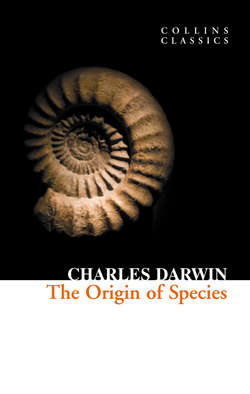Читать книгу The Origin of Species - Charles Darwin, Charles Darwin - Страница 36
CHAPTER 5 Laws of Variation
ОглавлениеEffects of changed conditions—Use and disuse, combined with natural selection; organs of flight and of vision—Acclimatisation—Correlated variation—Compensation and economy of growth—False correlations—Multiple, rudimentary, and lowly organised structures variable—Parts developed in an unusual manner are highly variable: specific characters more variable than generic: secondary sexual characters variable—Species of the same genus vary in an analogous manner—Reversions to long-lost characters—Summary.
I have hitherto sometimes spoken as if the variations—so common and multiform with organic beings under domestication, and in a lesser degree with those under nature—were due to chance. This, of course is a wholly incorrect expression, but it serves to acknowledge plainly our ignorance of the cause of each particular variation. Some authors believe it to be as much the function of the reproductive system to produce individual differences, or slight deviations of structure, as to make the child like its parents. But the fact of variations and monstrosities occurring much more frequently under domestication than under nature, and the greater variability of species having wide ranges than of those with restricted ranges, lead to the conclusion that variability is generally related to the conditions of life to which each species has been exposed during several successive generations. In the first chapter I attempted to show that changed conditions act in two ways, directly on the whole organisation or on certain parts alone, and indirectly through the reproductive system. In all cases there are two factors, the nature of the organism, which is much the most important of the two, and the nature of the conditions. The direct action of changed conditions leads to definite or indefinite results. In the latter case the organisation seems to become plastic, and we have much fluctuating variability. In the former case the nature of the organism is such that it yields readily, when subjected to certain conditions, and all, or nearly all, the individuals become modified in the same way.
It is very difficult to decide how far changed conditions, such as of climate, food, etc., have acted in a definite manner. There is reason to believe that in the course of time the effects have been greater than can be proved by clear evidence. But we may safely conclude that the innumerable complex co-adaptations of structure, which we see throughout nature between various organic beings, cannot be attributed simply to such action. In the following cases the conditions seem to have produced some slight definite effect: E. Forbes asserts that shells at their southern limit, and when living in shallow water, are more brightly colored than those of the same species from further north or from a greater depth; but this certainly does not always hold good. Mr. Gould believes that birds of the same species are more brightly colored under a clear atmosphere, than when living near the coast or on islands; and Wollaston is convinced that residence near the sea affects the colors of insects. Moquin-Tandon gives a list of plants which, when growing near the sea-shore, have their leaves in some degree fleshy, though not elsewhere fleshy. These slightly varying organisms are interesting in as far as they present characters analogous to those possessed by the species which are confined to similar conditions.
When a variation is of the slightest use to any being, we cannot tell how much to attribute to the accumulative action of natural selection, and how much to the definite action of the conditions of life. Thus, it is well known to furriers that animals of the same species have thicker and better fur the further north they live; but who can tell how much of this difference may be due to the warmest-clad individuals having been favoured and preserved during many generations, and how much to the action of the severe climate? For it would appear that climate has some direct action on the hair of our domestic quadrupeds.
Instances could be given of similar varieties being produced from the same species under external conditions of life as different as can well be conceived; and, on the other hand, of dissimilar varieties being produced under apparently the same external conditions. Again, innumerable instances are known to every naturalist, of species keeping true, or not varying at all, although living under the most opposite climates. Such considerations as these incline me to lay less weight on the direct action of the surrounding conditions, than on a tendency to vary, due to causes of which we are quite ignorant.
In one sense the conditions of life may be said, not only to cause variability, either directly or indirectly, but likewise to include natural selection, for the conditions determine whether this or that variety shall survive. But when man is the selecting agent, we clearly see that the two elements of change are distinct; variability is in some manner excited, but it is the will of man which accumulates the variations in certain direction; and it is this latter agency which answers to the survival of the fittest under nature.
